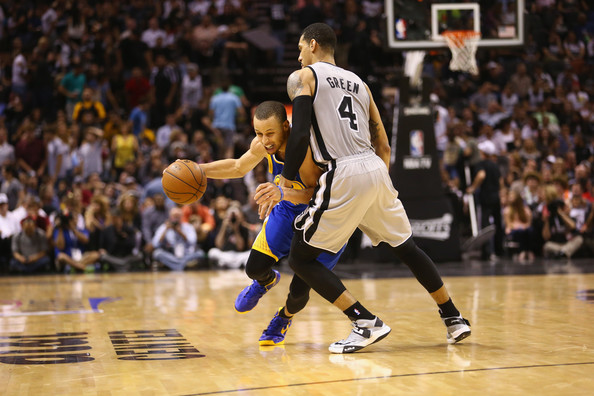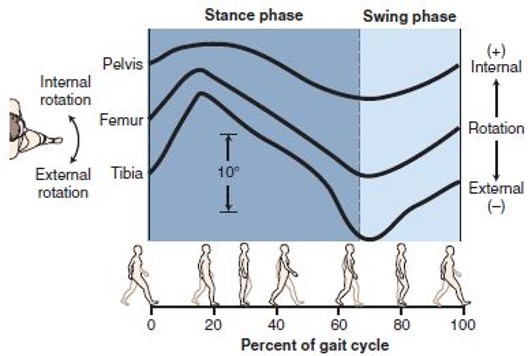How Basketball Players Can Massively Improve Their Mobility
Oct 04, 2021
Basketball athletes are some of the most dynamic, explosive, and skilled athletes in the world.
Personally, basketball athletes are my favorite type of athlete to work with because (aside from it being my favorite sport), they are such great athletes with a strong work ethic.
The bad news is, they are sometimes are quite locked up and stiff. The good news is, there is often huge potential for them to improve their movement quality, mechanics, and therefore performance on the court. Also, because basketball is a sport with relatively repetitive positions, there tends to be a common theme in limitations of their movement.
In this article, I am going to discuss:
- Common movement limitations of basketball athletes
- What these limitations look like & how to spot them
- How to best select exercises to improve movement & performance
Common Limitations in Basketball Athletes
Basketball is a sport, like many others, that requires a lot of time spent on the front-side of the foot (forefoot). There’s a common saying that “not many athletic movements take place on the heels”, which rings especially true for basketball.

The ball of the foot is massively important for athleticism because it allows for quick, fluid movement. When we strike the ground on our mid-foot, this allows us to utilize the Stretch-Shortening Cycle qualities of our Achilles and other tendons to create that “spring” to propel ourselves forward.

This is beneficial because in order for us to be as efficient as possible with athletic movement, we want to spend the least amount of energy possible. This means that we want the tendons to do more work in activities like jumping and sprinting so muscles don’t have to work as hard.
Here’s the thing: Our body, regardless of the sport or task, will adapt to the repetitive demands placed on it. This means that if we are constantly on our toes, we will adapt to a posture and movement pattern that chronically pushes us onto our toes.

If you are able, stand up and lean significantly on your toes. What happened to your weight? It went forward. Your back arches more, your stomach protrudes outward more, and your heels come off of the floor.
This creates an Anterior Orientation of the hips (pelvis) which means that our pelvis will be pushed forward as a whole unit. This is an orientation, but in order for our body to access non-compensatory movement, we need to be able to create “relative movement” when we necessary:
If our pelvis is chronically forward, which it almost always is for basketball players, then we are pushing our hips into a position where it cannot access proper dissociation between sides of the pelvis. This can only happen when we are starting from a place of relative “neutrality”. Click here for more information on Anterior Pelvic Tilt and orientation.
A perfect example is jumping. In order to jump as high as we can from a standing position, we need to be able to first flex (round) our back a little bit. Take a look at the video from Paul Fabritz (@PJFperformance):
His back rounds as he drops into the hole, but that allows him to create room to extend (arch hip back to produce power) into. If we are starting too extended with a forward pelvis, it will be harder to achieve more extension to produce power.
What Basketball Players Often Need
As I mentioned, many basketball athletes are going to be stuck in this extended position, because they need to constantly use extension to produce power and speed.
When the pelvis is forward, it pushes weight onto our toes and this biases it into a position of internal rotation.
This is not inherently bad, as internal rotation is required to put force into the ground so that we can be powerful and strong. And here's the thing: The human body is lazy. It will find the path of least resistance to conserve energy. You can think of anterior pelvic tilt in this case as basketball players simply finding the easiest possible way to put force into the ground.
However, over time, this tends to result in limitations of achieving proper external rotation. Similarly to what I described above, we need to access external rotation to move into internal rotation, even in basic walking and running:

Two basic assessments I use to determine limitations are hip flexion and shoulder flexion. If an athlete is chronically stuck with a forward pelvis, they are going to be limited in both of these because they can’t access external rotation of the hip and even the shoulder:
Watch below for how to measure these. Ideally about 110 degrees of each is what I'm looking for in a basketball athlete.
How To Maximize Movement For Basketball Performance
The solution? Help these athletes find their heels. That’s right – bear with me for a second.
We’ve established the need to be able to move in and out of different joint actions. To create force, we must absorb it first in some way. To extend our hips, we need to move into extension from a place of relative flexion.
Let’s look at this graph below again:

Do you notice how there is more external rotation when our heel is on the ground (force absorption) and more internal rotation (force production) when the heel is lifting off of the ground?
If we want to be fluid in our movement, it’s essential to be able to transition between these joint actions. Helping athletes find their heels in training can be very helpful because they will be able to find what they don’t have.
I’m not saying we should train athletes to be on their heels. What I am saying is that we can train them to find more of their rear-foot (relatively) so that they we can take an athlete from a position where they can more effectively load into their mid-foot and push-off with more of their forefoot.
Besides, basketball players can and do need to find their heels on the court. I really like this post by Erik Huddleston that illustrates that using an on-court example (think of "early propulsive" as simply heel strike).
Because basketball is such a fast sport, athletes will inherently be more on their mid-foot regardless, but now they will be able to access more of these other joint actions and absorb force to produce more power upon-push off.
Best Mobility Exercises For Basketball Players
As always, I am going to start from the ground and work up from there. For prep activities, I like to give athletes the ability to control the tilt of their pelvis and a sense of their heels. We can also do this by training hip extension, as anterior pelvic tilt is a position of chronic hip flexion:
Exercise credit: Bill Hartman. https://billhartmanpt.com/
A good progression to maximizing the ability to achieve extension of the hip would be a Hip Lock activity:
As for the weightroom, I am a fan of exercises that create the intended positions I want without me having to say a word.
If you're looking for more strategies to improve movement to help your clients feel great, check out my free webinar: 5 Strategies To Help Your Clients Feel 85% Better Immediately
A front foot elevated split squat will naturally offload more weight from their forefoot and onto their heel/mid-foot. This will help them not over-extend their hips:
Click here for more information on why I would choose this split squat.
Heels-elevated positions are also very helpful for this because they help bias more heel reference as well as the ability to create more external rotation of the hips. Here is a basic squat you can use:
Finally, once I get their hip flexion and shoulder flexion to improve, I will help re-train proper internal rotation so that the body doesn't have to compensate to find what it doesn't have. We can do this by training “loading” into one hip so we can push out of it. A hip shift in a split squat is a very helpful way to do this:
We can also use more split-stance deadlift activities to maximally load the hip to push out of it:
I have more information on deadlift variations here.
How To Transfer Mobility Gains To Athletic Movement
While regaining range of motion with ground-based and weightroom exercises are key, we can't ignore the fact that basketball athletes are dynamic, explosive athletes. This needs to transfer over to fast movement. In order to accomplish this, we can use positions that help us bias the ability to move in and out of internal rotation.
As we load into a cut or change direction, we need to start (as usual) in a place of external rotation, move into internal rotation, and explode out of it. Here are some drills that can help train that once we regain range of motion:
Summary
To summarize, basketball is a sport that requires a lot of time spent on the forefoot and in extension. However, over time, this can cause adaptations that limit the ability to access range of motion without a lot of compensation and overuse of certain muscles and joints.
To improve movement quality, and therefore performance and injury minimization, we can:
- Improve their ability to feel their rear-foot, which will help them access more of their mid-foot in-game
- Improve external rotation and flexion to allow for more internal rotation and extension
- Choose positions in the weightroom that allow for more relative movement of the pelvis and dissociation between sides of the body, just as it occurs in the sport
Don’t miss out on free education
Join our email list to receive exclusive content on how to feel & move better.

